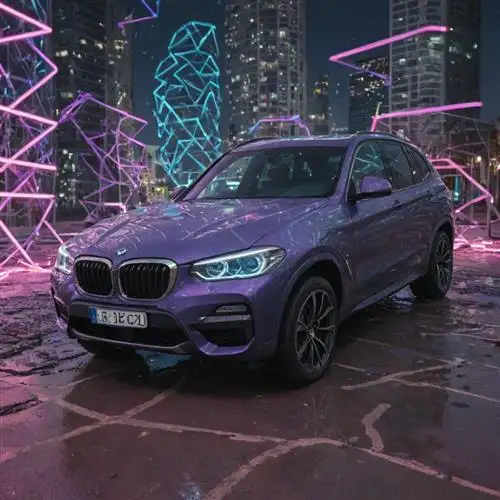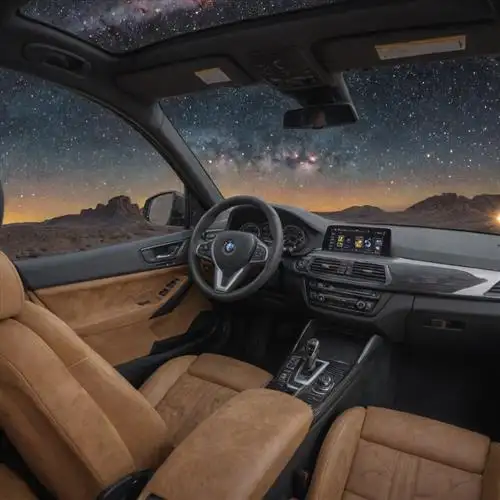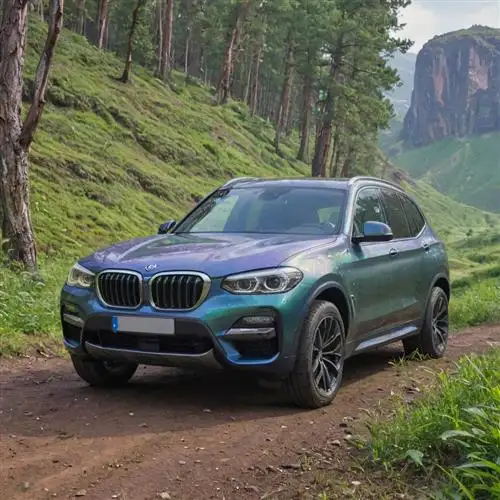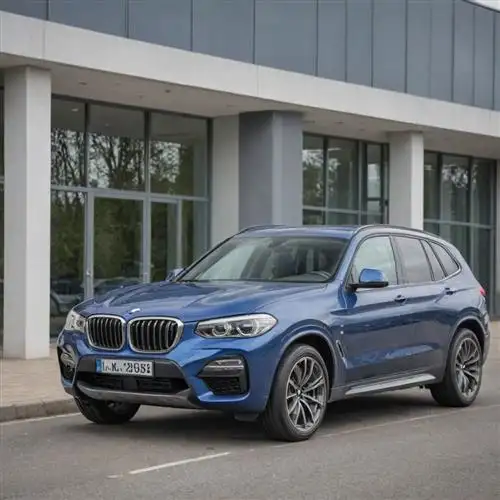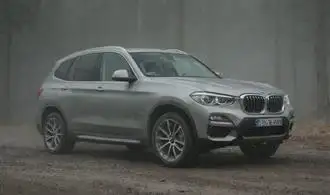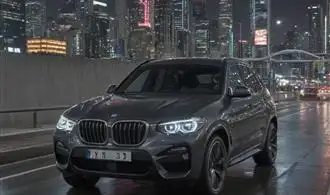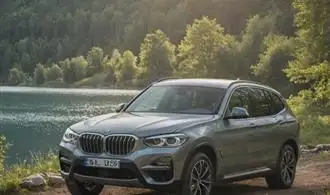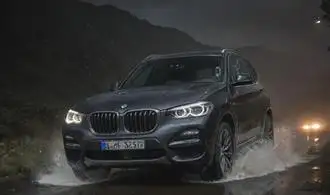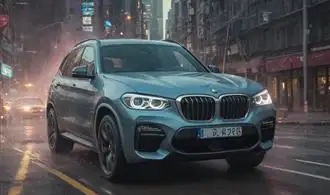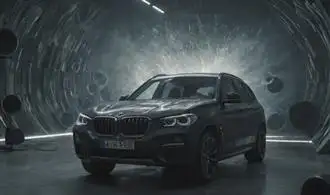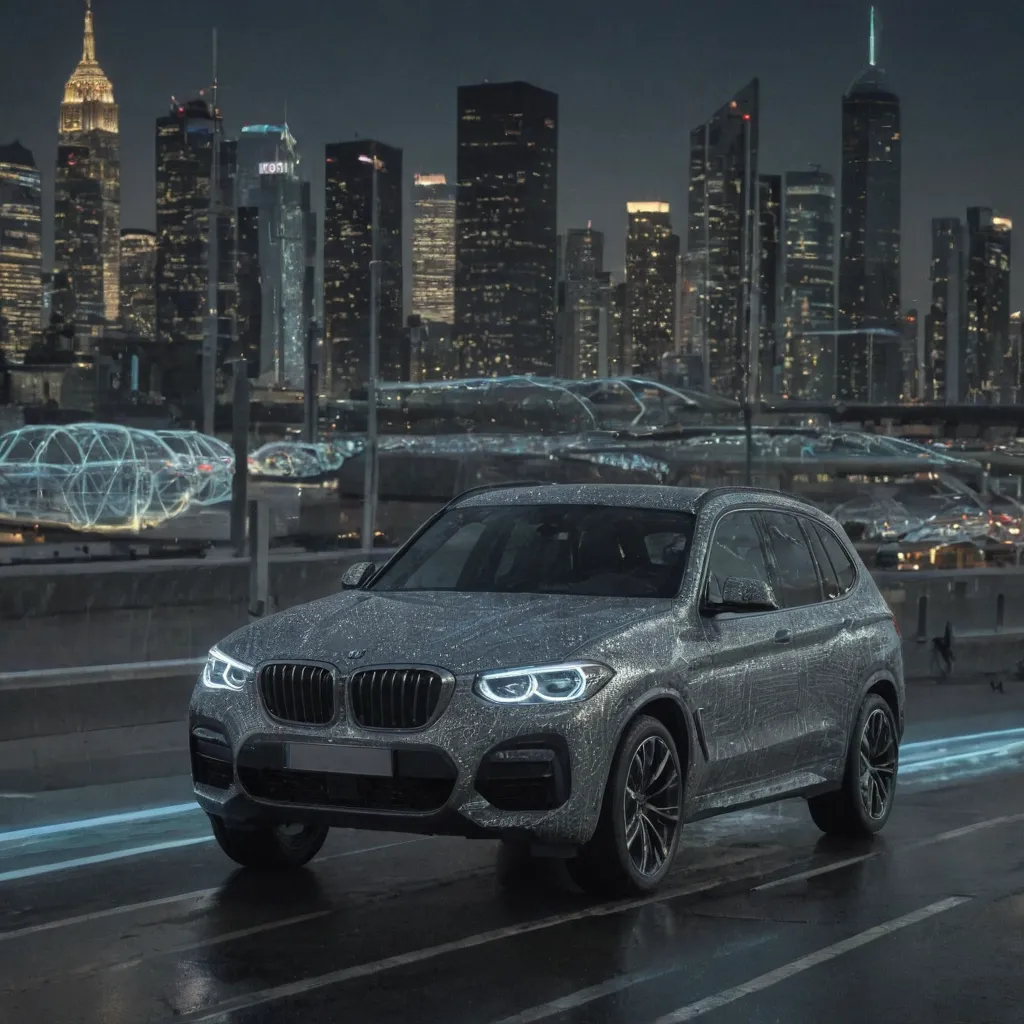
Exterior Design Impressions
The BMW X3's exterior design is a masterpiece of form and function, blending sleek aerodynamics with rugged, imposing presence. The distinctive kidney grille, a signature BMW design element, immediately commands attention, setting the tone for the vehicle's powerful and sophisticated aesthetic. The swept-back headlights, with their LED technology, not only provide exceptional illumination but also contribute to the X3's dynamic appearance, hinting at the agile performance that lies beneath the surface.
One of the most striking aspects of the X3's exterior is the balance between its angular, chiseled lines and the smooth, flowing curves that define its silhouette. This delicate interplay of sharp edges and graceful contours gives the SUV a sense of motion, even when standing still. The pronounced wheel arches, housing large alloy wheels, further emphasize the X3's robust and capable nature, while the gently sloping roofline adds a touch of elegance and refinement.
Another noteworthy design feature is the BMW X3's distinctive character line, which runs along the side of the vehicle, creating a visual flow that draws the eye from the front to the rear. This subtle design element not only enhances the overall aesthetic but also contributes to the SUV's aerodynamic efficiency, helping to reduce drag and improve fuel economy.
The attention to detail in the X3's exterior design is truly impressive. From the sleek and integrated side mirrors to the sculpted rear end, every element has been meticulously crafted to deliver a cohesive and harmonious appearance. The optional M Sport package, with its more aggressive front and rear bumpers, further accentuates the X3's dynamic persona, making it a true standout in the crowded SUV segment.
Interior Styling and Ergonomics
The BMW X3's interior styling and ergonomics are designed to provide a premium, driver-focused experience. The cabin features a sleek and modern aesthetic, with a well-organized layout that prioritizes both form and function.
The dashboard is dominated by a large, high-resolution infotainment display that seamlessly integrates with the vehicle's various systems. The display is positioned within easy reach of the driver, allowing for intuitive control of entertainment, navigation, and vehicle settings. The integrated touch functionality, combined with physical buttons and knobs, offers a versatile and responsive user interface.
The steering wheel is leather-wrapped and features a range of controls, including those for audio, Bluetooth connectivity, and driver information displays. The placement of these controls ensures that the driver can access them without taking their hands off the wheel, promoting a safer and more focused driving experience.
The seats in the BMW X3 are exceptionally comfortable and supportive, with ample adjustability to accommodate a wide range of body types. The driver's seat, in particular, offers a commanding view of the road, with excellent visibility in all directions. The available lumbar support and heating/ventilation features further enhance the overall comfort and convenience.
The center console houses the gear selector, as well as additional controls for the climate system and other vehicle functions. The layout of these controls is logical and easy to navigate, reducing the time and effort required to make adjustments on the go.
The BMW X3's interior is finished with high-quality materials, including soft-touch surfaces and accents of brushed aluminum or wood, depending on the trim level. This attention to detail contributes to the overall sense of premium craftsmanship and luxury that is synonymous with the BMW brand.
In terms of ergonomics, the BMW X3 excels. The controls and displays are positioned with the driver in mind, ensuring easy accessibility and intuitive operation. The combination of physical buttons, knobs, and touch functionality allows for a seamless interaction with the vehicle's various systems, regardless of the driver's preference or familiarity with the technology.
Innovative Design Elements
The BMW X3 is a testament to the brand's commitment to engineering excellence and a relentless pursuit of design innovation. At the forefront of its revolutionary design are a host of innovative elements that set it apart from the competition. From its striking exterior to its meticulously crafted interior, every detail of the X3 has been carefully considered to deliver an unparalleled driving experience.
One of the most striking design elements of the BMW X3 is its dynamic silhouette. The vehicle's sculpted body lines and distinctive kidney grille create a striking visual presence on the road, commanding attention wherever it goes. The use of high-quality materials, such as aluminum and high-strength steel, not only enhances the X3's overall aesthetic but also contributes to its impressive performance and handling capabilities.
The innovative design of the BMW X3 extends beyond its exterior. Step inside the cabin, and you'll be greeted by a harmonious blend of form and function. The driver-centric cockpit layout, with its intuitive controls and premium materials, creates a truly immersive driving experience. The available advanced technology features further enhance the X3's capabilities, providing the driver with a seamless integration of connectivity and convenience.
One of the standout design elements of the BMW X3 is its versatile and spacious interior. The vehicle's generous cargo capacity and flexible seating arrangements make it an ideal companion for both everyday commutes and weekend adventures. Whether you're hauling large items or accommodating multiple passengers, the X3 delivers the perfect blend of practicality and luxury.
Underpinning the BMW X3's innovative design is a deep commitment to sustainability and environmental responsibility. The vehicle's efficient powertrain options, including hybrid and all-electric variants, demonstrate the brand's dedication to reducing its carbon footprint without compromising performance or driving dynamics.
Personalization and Customization
The BMW X3 offers an impressive array of personalization and customization options, allowing you to tailor the vehicle to your unique preferences. From exterior color choices to interior trim selection, the level of customization available is remarkable.
One of the standout features of the X3's customization is the extensive color palette. You can choose from a wide range of standard and metallic paint finishes, each offering a distinct character and visual appeal. Whether you prefer the bold and striking Phytonic Blue or the elegant and refined Mineral White, the X3 allows you to express your personal style through the exterior color.
Beyond the paint, the X3 also offers a variety of wheel designs, ranging from the standard 18-inch alloys to the more premium 21-inch options. These wheels not only enhance the aesthetic appeal of the vehicle but also contribute to the overall dynamic performance and handling characteristics.
The interior of the X3 is equally customizable, with a selection of leather upholstery options and different trim materials to choose from. From the classic Black Dakota Leather to the more contemporary Vernasca Leather in stunning Mocha, the interior can be tailored to your taste. Additionally, the availability of various trim options, such as aluminum or wood accents, allows you to further personalize the cabin environment.
Beyond the standard features, the X3 also offers a range of optional packages and standalone features that enable even greater customization. For instance, the M Sport package introduces a more aggressive and sporty styling to the exterior, while the Luxury package adds an extra touch of refinement and elegance.
Design Evolution of the BMW X3
The BMW X3 has evolved significantly since its introduction in 2003, showcasing the brand's commitment to innovation and design excellence. The first-generation X3, known as the E83, was a bold entry into the compact luxury SUV market, blending BMW's signature driving dynamics with the utility and versatility expected of an SUV.
The second-generation X3, the F25, debuted in 2010 and ushered in a more refined and sophisticated design language. The exterior featured sharper lines, a more prominent kidney grille, and a sleeker silhouette, while the interior boasted higher-quality materials and a more driver-centric layout. This model solidified the X3's position as a true contender in the highly competitive segment.
The latest iteration of the BMW X3, the G01, was unveiled in 2017 and has continued to push the boundaries of design. This model features a bolder, more athletic stance, with a wider kidney grille, slimmer headlights, and a more sculpted body. The interior has also been significantly upgraded, with a more modern and technology-driven approach, including the integration of the latest infotainment and driver assistance systems.
One of the standout design features of the current BMW X3 is its seamless integration of form and function. The vehicle's aerodynamic profile not only enhances its visual appeal but also contributes to improved fuel efficiency and performance. The use of lightweight materials, such as high-strength steel and aluminum, has helped to reduce the overall weight of the X3, further enhancing its agility and responsiveness on the road.

